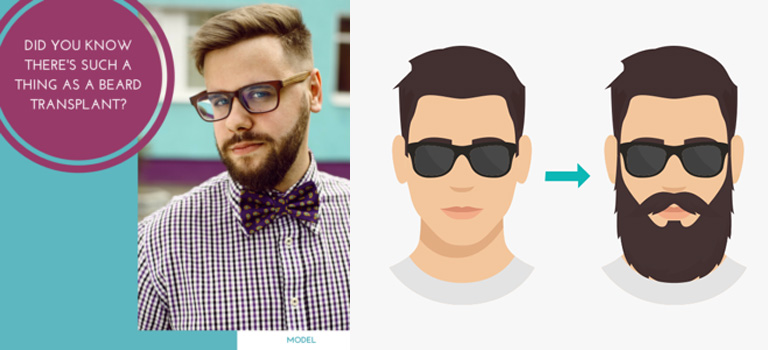Even before Bay Area hipsters in the Mission District made beards, mustaches, sideburns goatees and all other kinds of facial hair well, ‘hip’ again, facial hair has been a sign of manliness, strength and health. So when facial hair never grows in, thins all over or becomes splotchy in areas, it can be a major blow to the self-confidence.
Alopecia Barbae or balding in the beard area is more common that one might think. Thinning or bald patches appear under the chin, on the sides of the neck or cheeks or along the moustache region. And some people who don’t have any bald patches simply want fuller scruff like the Hollywood A-listers Drake, George Clooney, Ryan Gosling and Jon Hamm to name a few. That’s where beard transplants come in.
How Can I Get A Fuller Beard?
Just like Drs. Lieberman & Parikh restore a person’s head of hair using the NeoGraft hair restoration (FUE), they do a similar procedure for areas of the face. The principal of beard transplants is the same – harvest active hair follicles from one area of the body and transplant them into balding or thinning areas.
Matching a harvest area with a beard transplant area becomes more important than with a head to head transplant because the color and texture of a beard doesn’t always match the color and texture of the hairs on our head. Hair in the occipital area (back of the scalp) is the best area to take active hairs because they have a genetic programming that makes them resistant to hormones and to falling out.
Why I Should See A Board-Certified Hair Transplant Surgeon with a Good Aesthetic Eye?
Another important thing to note about beard transplants is that seeing a board-certified hair transplant specialist with a keen aesthetic eye is even more important when dealing with areas of your face. Facial hair comes in complicated patterns and making the end result look natural is a true art.
Beards can re-contour your face. Facial plastic surgeons understand how high or how low to start a beard transplant based on subtle contours of the facial structure.
Beard density is often related to ethnicity – Caucasians usually have thicker beards than Asians and black African Americans, although this is not always the case.
Take a look at someone with a full beard who hasn’t shaved in a while and you’ll probably notice an uneven border around the cheekbones and neck along with a bunch of stray hairs poking out in random places. Achieving this irregular, haphazard look is key to making a beard transplant look natural.
Access the free hair restoration tool to see yourself with more hair or give our Palo Alto office a call at (650) 332-8105. We’re also available for via email for answering questions or concerns.
